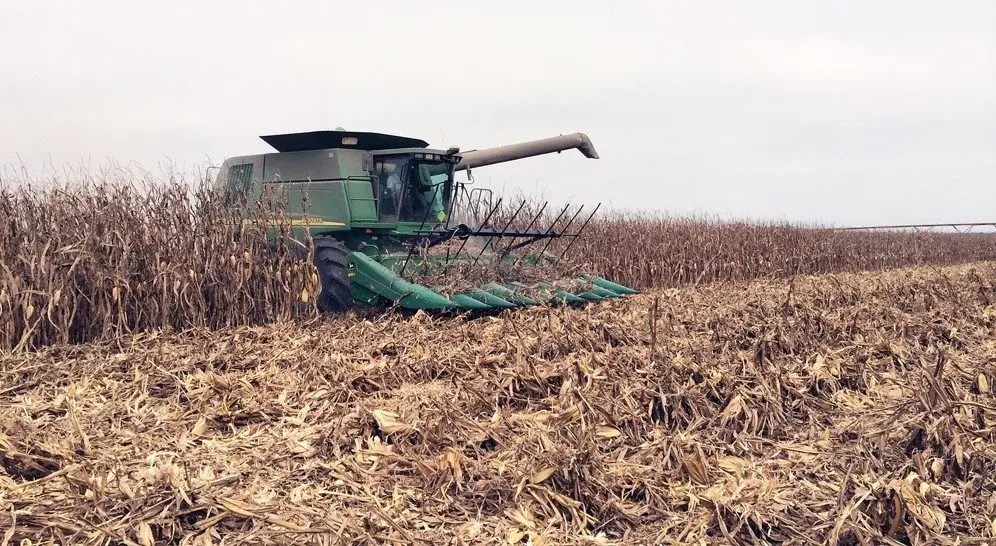(U of Arkansas System Division of Agriculture file photo by Kevin Lawson)
“We had record yields in 2024, and farmers still lost money. You can’t yield your way into profitability this year.” — Deacue Fields
By Mary Hightower, University of Arkansas System Division of Agriculture
Arkansas farmers will lose hundreds of dollars per acre this year for their corn, cotton, long grain rice, and soybean crops, according to an analysis by extension economists with the University of Arkansas System Division of Agriculture.
The analysis, “The State of the Arkansas Crop Economy in 2025,” conducted by Hunter Biram, Ryan Loy, and Scott Stiles, examined net returns on the state’s principal crops. They factored in expected yield, expected price, expected revenues, operating costs, and rent.
They found that Arkansas farmers can expect losses of:
- $273.71 per acre for corn
- $352.75 per acre for cotton
- $258.84 per acre for long grain rice
- $85.02 per acre for soybeans.
“The agricultural economy right now is probably in one of the most depressing states that I’ve seen in my career,” Deacue Fields, vice president-agriculture, for the University of Arkansas System, said to the University of Arkansas Board of Trustees. In addition to leading the University of Arkansas System Division of Agriculture, Fields is an agricultural economist.
“No matter what the yields, the prices are so low and expenses so high,” he said. “We had record yields in 2024, and farmers still lost money. You can’t yield your way into profitability this year.”
Abundant yield
Stiles agreed completely.
“Row crop economics are particularly challenged right now,” he said. “In what looks to be a third consecutive year of losses, growers are not in a good financial position.”
Working against growers are ample supplies of all commodities, which “are placing downward pressure on crop prices,” Stiles said. “We expect to see a record corn crop in the U.S. this fall. Although other major crops will be short of record production, domestic stocks will be comfortable.
“In addition, there was record corn, cotton, rice and soybean production in South America this year,” he said. “This is another factor pressuring the 2025 and 2026 price outlook.”
Prospects for help
“The profitability challenges in the row crop sector have now spread from the Mid-South into the Midwest,” Stiles said.
“With farmer angst increasing across the country, the Trump administration is exploring initiatives to ramp up aid,” he said “Part of these initiatives include a look into rising input costs. Also, there has been recent discussion around direct farmer subsidies through redistribution of tariff revenues.”
Biram said that “ad hoc disaster assistance has helped to keep farm incomes stable in the past, like during COVID and the Russia-Ukraine war.
“However, with input expenses remaining elevated despite falling income from crop farming, current disaster assistance through the Emergency Commodity Assistance Program, or ECAP, and the Supplemental Disaster Assistance Program, or SDRP, will not be enough to fully close the gap in multiyear declines in net farm income,” Biram said.
The cost of farming
Stiles said input costs are another concern.
“Fertilizers have trended higher for most of this year,” he said. “Phosphates have been particularly strong, with affordability at record lows for U.S. farmers.”
Fertilizer expense has remained elevated since 2022, largely driven by increased fertilizer prices resulting from the Russian invasion of Ukraine in early 2022. After a $70 million, or 15 percent, increase in 2021 and a $110 million, or 20 percent increase in 2023, seed expenses have remained elevated. This is despite a decline of $16 million, or 2 percent, in 2025 compared to 2023 and a modest $9 million or 1 percent increase in 2025.
“Seed prices continue to rise. The U.S. Department of Agriculture has seed price up approximately 25 percent since 2020,” Stiles said.
Labor expense is set to reach a record $413 million in 2025 with increases averaging $29 million, or 9 percent since 2021. Interest expense will be back to 2023 levels with a year-over-year decline of $23 million driven by relatively lower interest rates.
However, interest expense has increased $182 million or 46 percent since the increases in the Effective Federal Funds Rate since April 2022.
Despite the Sept. 17 cut in interest rates by the Federal Open Market Committee to an effective rate of 4.09 percent, “interest expenses still represent a significant cost that is continuing to price-squeeze farmers,” said Loy.
“Based on estimates derived from the 2025 long grain rice enterprise budgets, per-acre interest expenses are, on average, $15 higher than in 2021,” he said. “Assuming a 500-acre farm, this interest cost amounts to roughly $7,500 in additional expenses. This price squeeze hinders a farmer’s profit, impacting the health of rural economies that rely on agriculture.”
While rental expense, consisting of 8 percent of production expenses less feed and livestock purchases, fell to $541 million from $563 million in 2024 and $556 million in 2023, Loy said it was likely driven by declines in the value of crop production with most tenant farmers operating under a crop share agreement.
Weakened buying power
The analysis also noted the weakening purchasing power of the crop dollar. In looking at monthly crop price indices from the U.S. Department of Agriculture’s National Agricultural Statistics Service, going back to 2011, the report explains a widening gap between crop prices and input costs.
“Crop prices relative to input prices have declined, and the spread between the indices continued to widen from the 2014 Farm Bill until the pandemic in 2020,” the analysis states. ““Crop prices did spike in 2022-23 due to supply chain disruptions, and since the same supply chains carry fertilizer, input prices also spiked, ultimately negating the benefits of higher crop prices.”
The gap between these two measures is the greatest it has been in at least 25 years, “underscoring the rarity and severity of the economic conditions faced by agricultural producers in 2025,” the authors wrote.
The analysis is available at uaex.uada.edu as MP588, “State of the Arkansas Crop Economy in 2025.”
Have a news tip or event to promote? Email White River Now at news@whiterivernow.com. Be sure to like and follow us on Facebook and Twitter. And don’t forget to download the White River Now mobile app from the Google Play Store or the Apple App Store.
Get up-to-date local and regional news/weather from the First Community Bank Newsroom on Arkansas 103.3 KWOZ every weekday morning and afternoon. White River Now updates are also aired on weekday mornings on
93 KZLE, Outlaw 106.5, and Your FM 99.5. Catch CBS News around the top of every hour on 1340 KBTA.







